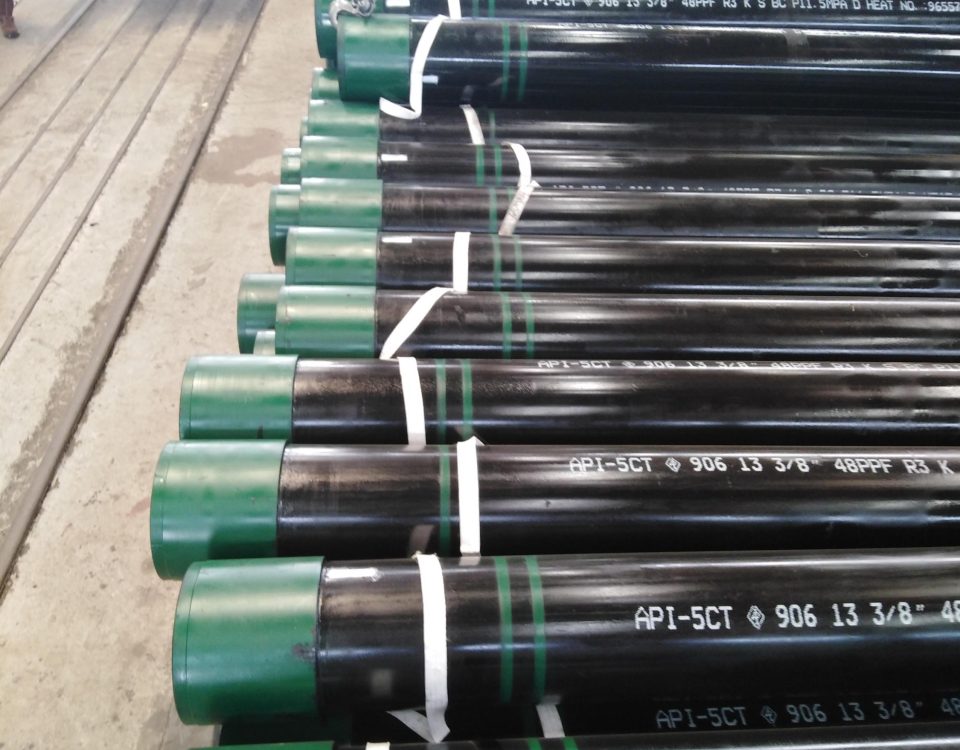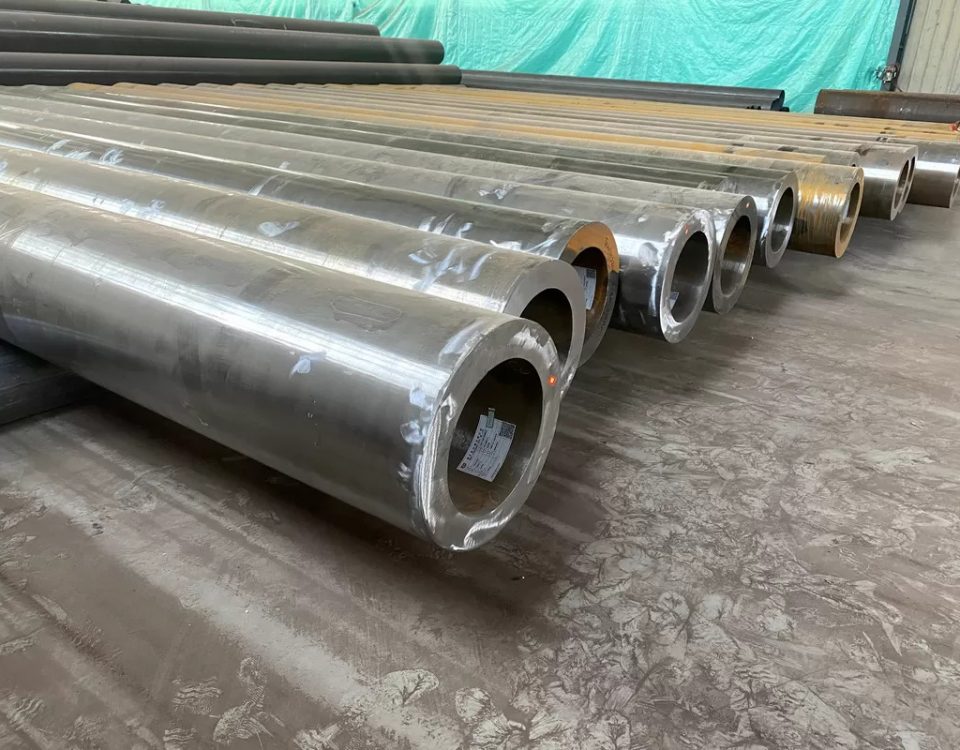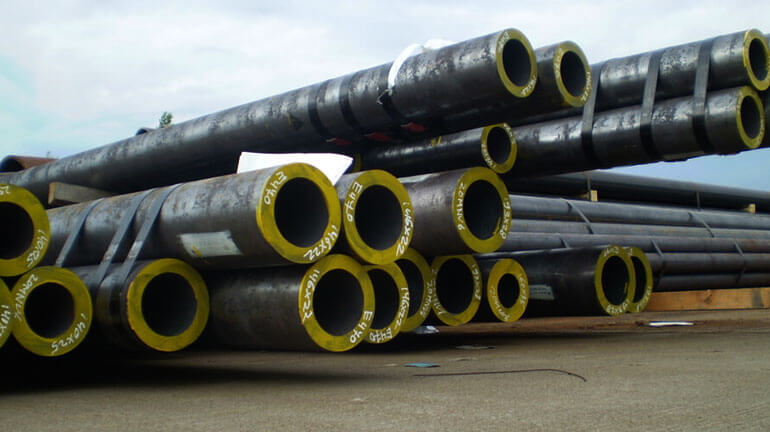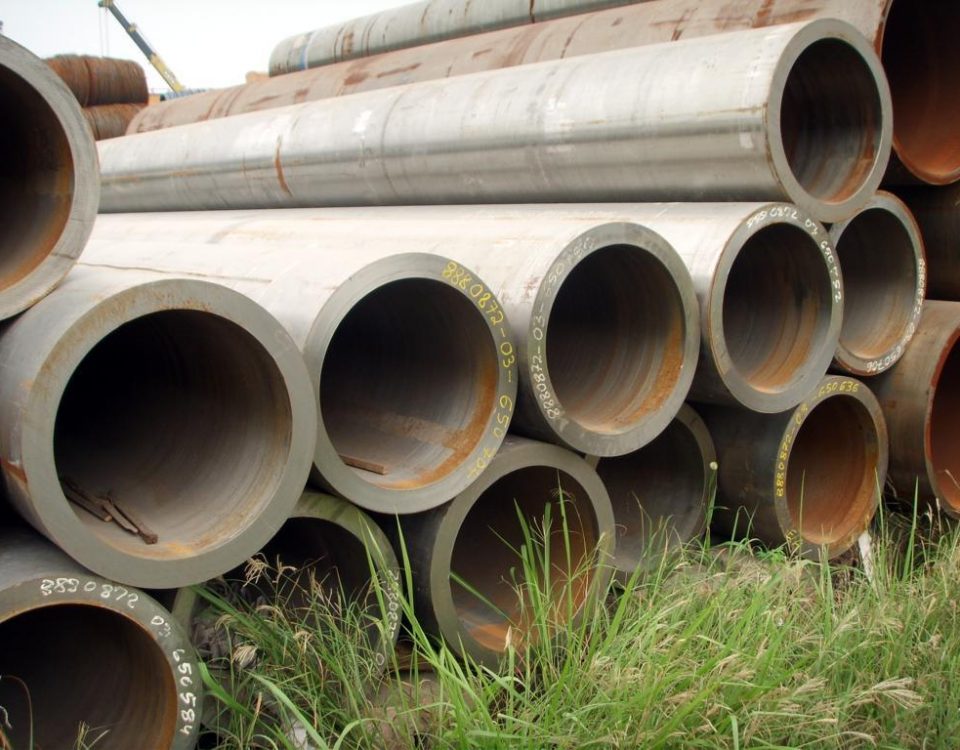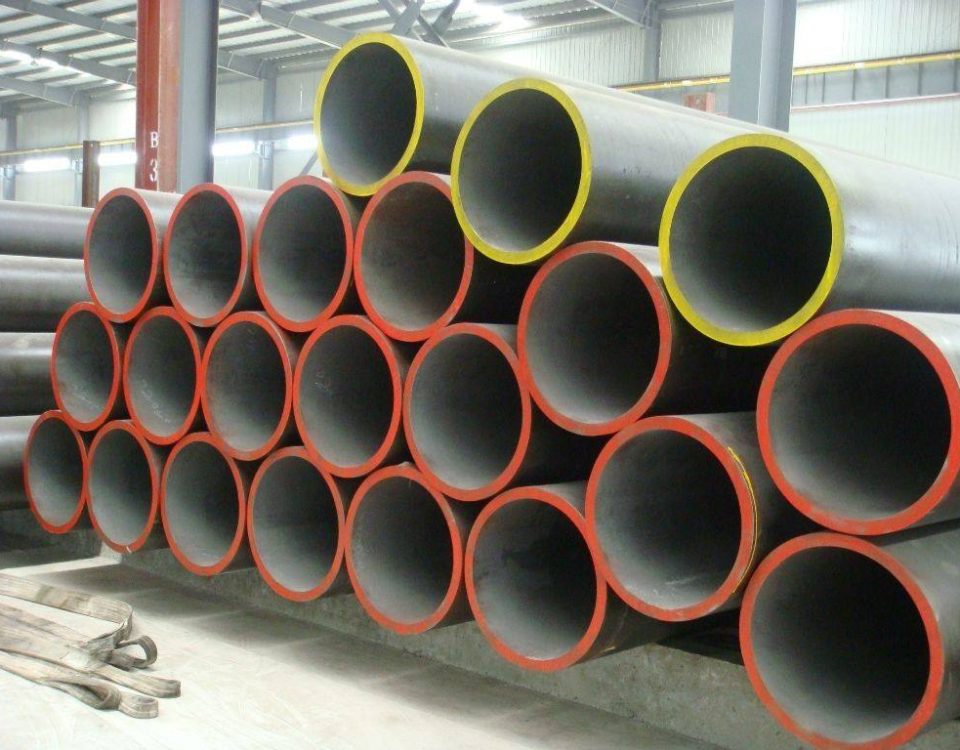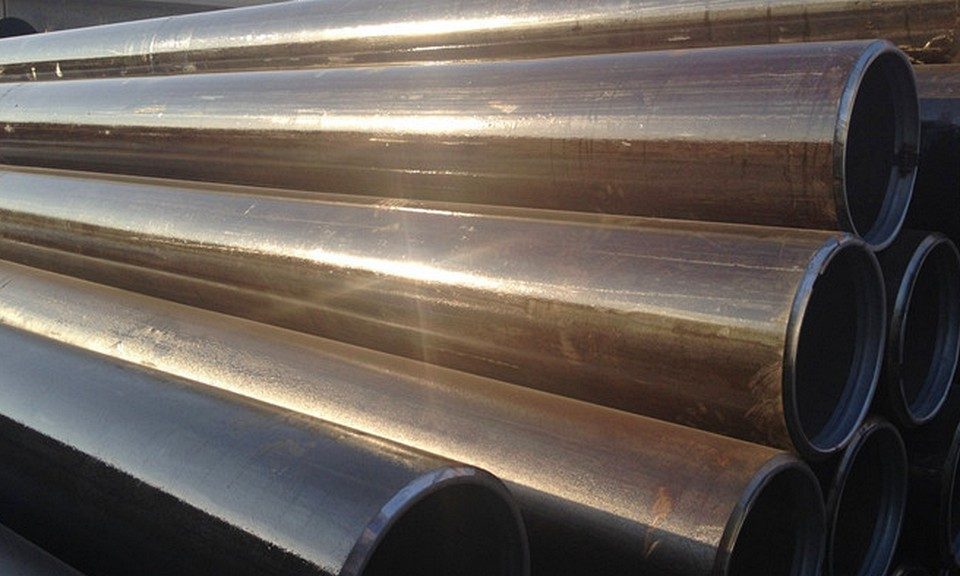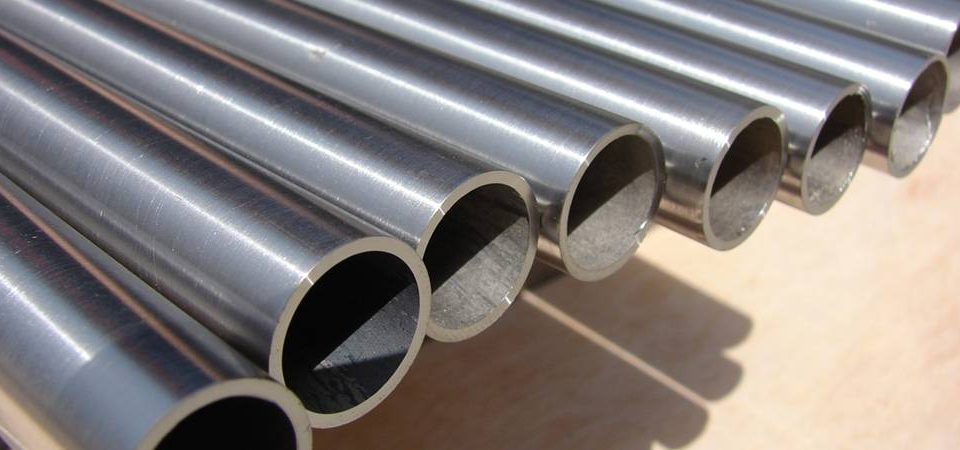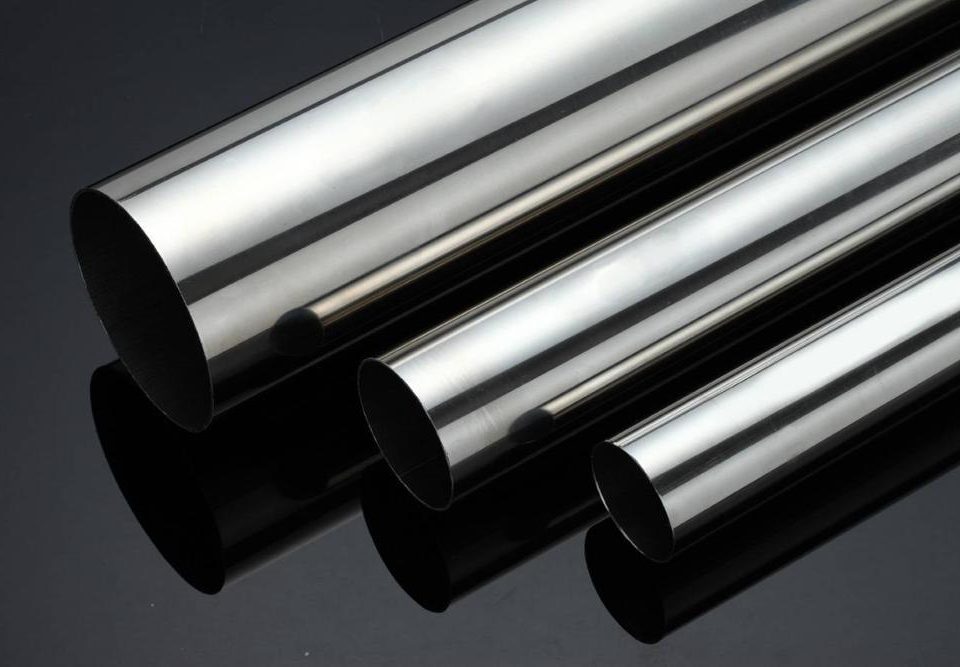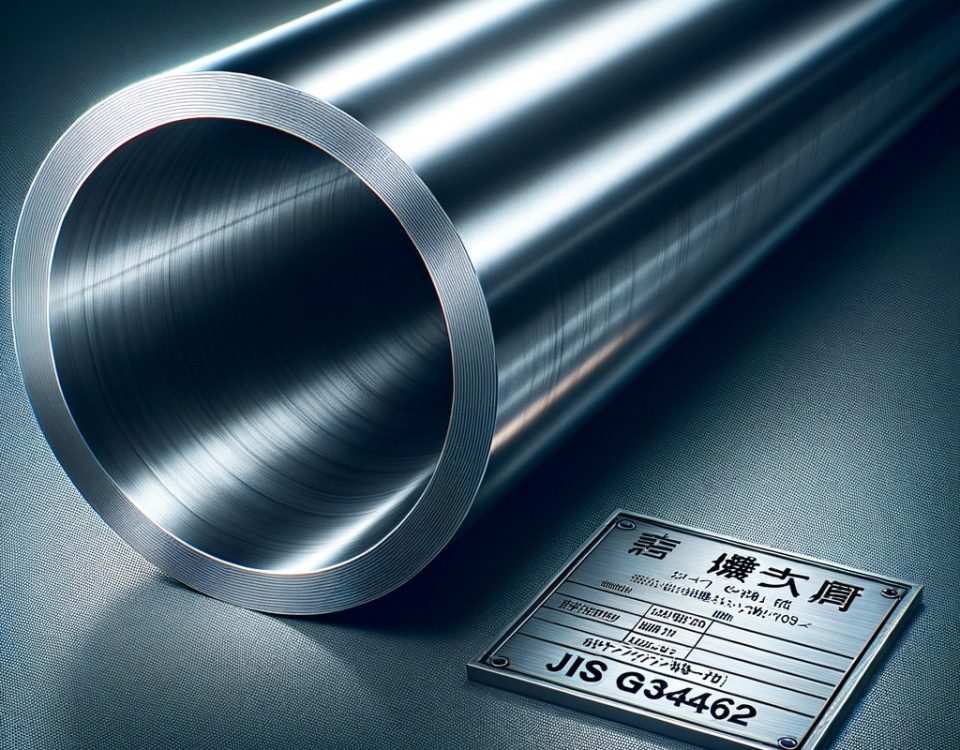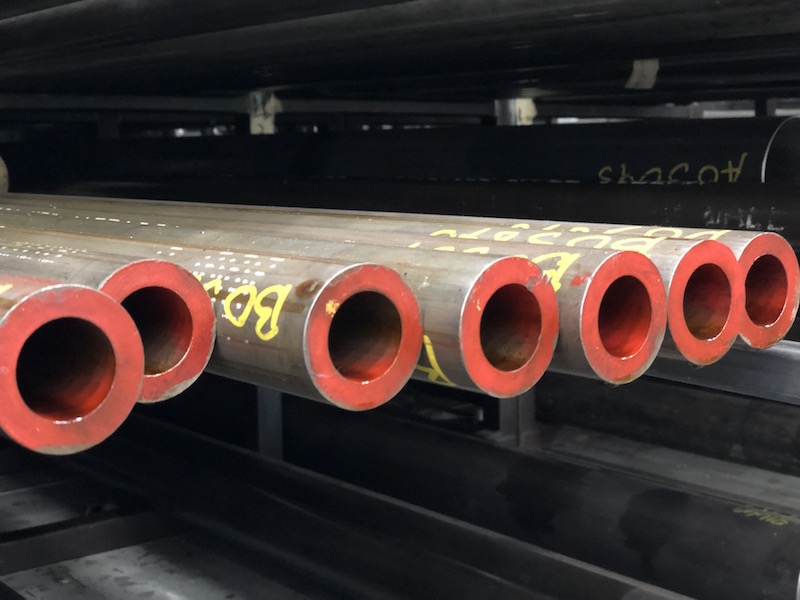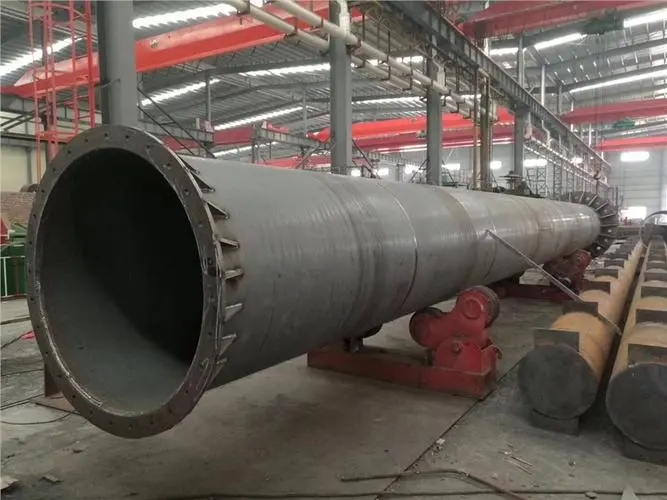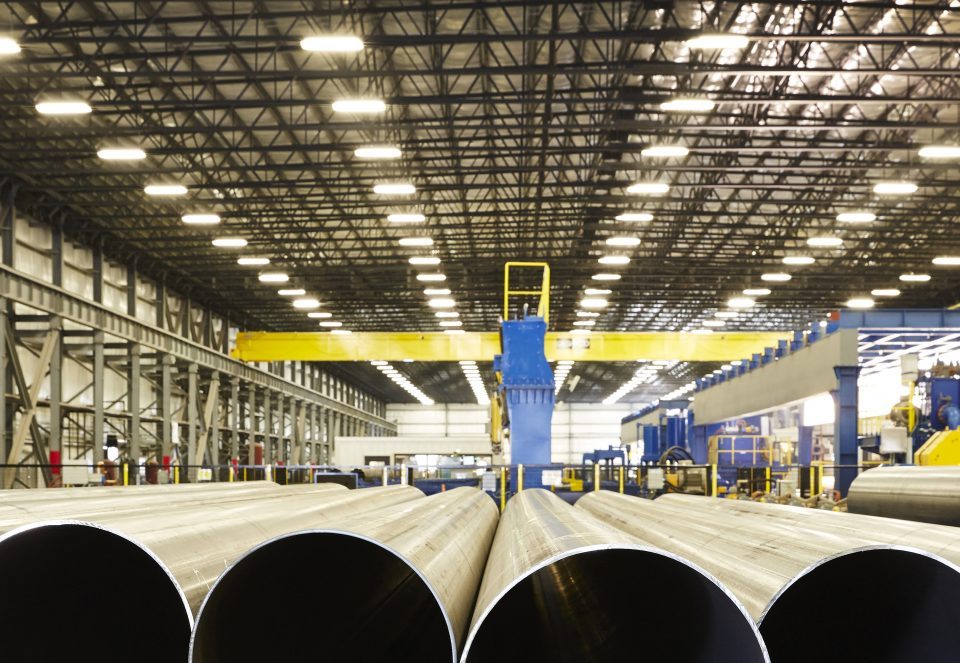The steel market soars by 600, and the rhythm changes. pay attention to heavy data
September 15, 2021Common quality problems of steel pipes
September 30, 2021Hot rolled
(Extruded seamless steel pipe): round tube billet → heating → piercing → three-roll cross rolling, continuous rolling or extrusion → stripping → sizing (or reducing) → cooling → straightening → hydraulic test (or flaw detection) →Marking→Warehousing
The raw material for rolling seamless pipes is round pipe blanks. The round pipe blanks are cut by a cutting machine into a billet with a length of about 1 meter, and then sent to the furnace for heating via a conveyor belt. The billet is fed into the furnace and heated at a temperature of approximately 1200°C. The fuel is hydrogen or acetylene. The temperature control in the furnace is a key issue. After the round tube is out of the furnace, it must be pierced through a pressure punching machine. Generally, the more common piercing machine is the tapered roller piercing machine. This type of piercing machine has high production efficiency, good product quality, large perforation diameter expansion, and can wear a variety of steel types. After piercing, the round tube billet is successively cross-rolled, continuous rolled or extruded by three rolls. After squeezing, take off the tube and calibrate. The sizing machine uses a tapered drill bit to rotate at a high speed into the steel blank to punch holes to form a steel pipe. The inner diameter of the steel pipe is determined by the length of the outer diameter of the drill bit of the sizing machine. After the steel pipe is sized, it enters the cooling tower and is cooled by spraying water. After the steel pipe is cooled, it will be straightened. After straightening, the steel pipe is sent to the metal flaw detector (or hydraulic test) by the conveyor belt for internal flaw detection. If there are cracks, bubbles, etc. inside the steel pipe, it will be detected. After the quality inspection of steel pipes, strict manual selection is required. After the quality inspection of the steel pipe, paint the serial number, specification, production batch number, etc. with paint. It is hoisted into the warehouse by a crane.
Cold drawn
Seamless steel pipe: round tube blank → heating → piercing → heading → annealing → pickling → oiling (copper plating) → multi-pass cold drawing (cold rolling) → billet tube → heat treatment → straightening → hydraulic test (flaw detection) →Marking→Warehousing.
Application promotion
Foreign heat treatment manufacturers attach great importance to cooling during the heat treatment process. According to the technical and process requirements of 12Cr1MoV structural alloy steel pipes, slow cooling, oil quenching, one-time gas quenching, etc. can be carried out. Rapid atmosphere circulation cooling uses high-pressure gas injection into the cooling chamber, and the computer controls the flow rate and flow rate changes to achieve the cooling rate within a specific time, so as to achieve the required cooling curve during the heat treatment process and ensure the heat treatment quality of the 12Cr1MoV structural alloy steel pipe. In the past, the quenching gas cooled by the gas quenching method is nitrogen, helium, etc. At present, the 12Cr1MoV structural alloy steel pipe is cooled very quickly with strong air injection. After quenching, there is only a very thin oxide film on the surface, which is off-white, 12Cr1MoV The color of the structural alloy steel pipe is still beautiful, and a large amount of nitrogen and inert gas are saved, which further reduces the cost of heat treatment.
The combination of vacuum low pressure carburizing and high pressure gas quenching is an advanced carburizing quenching process today. It has fast carburizing speed, excellent carbide structure, small quenching cracking and deformation, energy saving and carburizing agent raw materials, carburizing 12Cr1MoV Structural alloy steel pipes have good surface quality and are conducive to environmental protection.
Heat treatment equipment
Fan cooling, heat exchanger cooling, quenching oil tank cooling and other cooling devices all adopt oil-sealed self-cooling, which completely replaces the water-cooled circulation system, and the entire heat treatment furnace does not require any cooling water. For example, hot air circulation fan cooling: change the inlet and outlet pipes of the original water cooling jacket to oil pipes, and place a small oil tank with a diameter of 102mm close to the fan. The oil cooling system is fully enclosed. When the fan bearing heats up, the proportion of the heated oil is small. , Naturally float upwards, causing the oil to circulate naturally. In the case of small oil tank storage and natural heat dissipation, the hot oil is added to the circulation after being cooled, so as to completely replace water cooling without consuming fuel and requiring no power. The water in the plate heat exchanger of the quenching oil tank is replaced with cooling oil. The cooling oil is heated by the heat exchange of the hot oil. The change in the specific gravity of the oil causes the cooling oil to circulate itself. It can achieve the effect of full oil cooling and save a lot of cooling water.
Nitriding furnace
The German company Ipsen has applied hydrogen probes and corresponding technologies to measure and control the nitrogen potential in the nitriding furnace, so as to adjust and control the atmosphere of the nitriding furnace and realize the modernization of the nitriding furnace.
Gas radiant tube
Use natural gas for heating. Gas heating technology and equipment are very mature in Europe. Natural gas burners have a standard series, which are manufactured and supplied by professional burner factories. The inner tube of the gas radiant tube is replaced with ceramic from stainless steel to extend the service life and increase the power. Natural gas heating improves energy utilization and reduces production costs.




